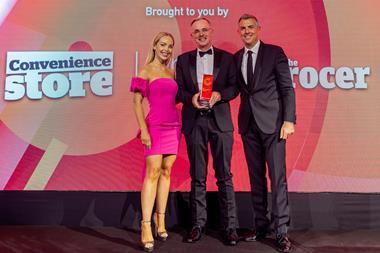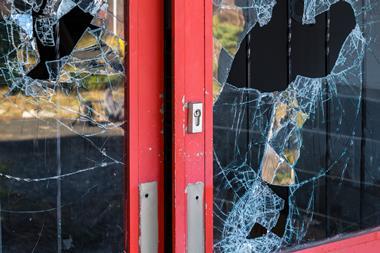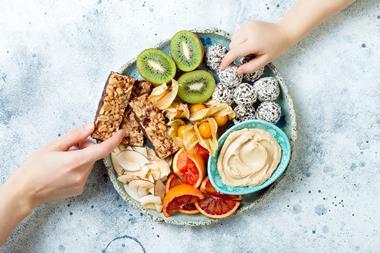What makes the customer experience a good one? Our C-Store Champions discuss what it means to them and their shoppers
Paul Stone, eight Spar stores in the Manchester area
Paul says keeping in touch with what the younger generation wants helps keep customers happy
Donna Mullan, Mullan’s Spar, Armagh
Offering ready-prepared vegetables in different portion sizes are mong the recent improvements at the Mullans’ store
Sukhi’s Budgens, Kenilworth, Warwickshire
Sid is planning a full refit to include a coffee area and community hub to create a more sociable atmosphere
Veronia McCarroll, Nisa Local, Dunstable, Bedfordshire
Today’s shoppers are much more focused on the experience they receive, Veronica believes
Do you think that the shopper experience has increased in importance?
Paul: Definitely. I think particularly where our stores are located, consumers have a wide choice of convenience stores they can choose to visit and so the experience we can offer them and the ambience of the store are very important in encouraging more shoppers to choose us.
Donna: Absolutely, yes. I think everyone is in a hurry, everyone is rushing, so the more convenient you can make things for them and the more availability you can provide, the better. The way people shop and cook has changed drastically. People want to buy their potatoes ready-mashed and ready to reheat. They want to rush in and rush out and get dinner on plates quickly. These products don’t necessarily have to be cheap, but they do have to be ultra-convenient.
Sid: Absolutely, without a shadow of a doubt. I think this is because the consumer can get their food from so many different places now that we need to add something else other than just plonking stock on shelves. You need to stand out from the crowd, and there are lots of ways to give people more reasons to come to your store.
Veronica: I think so, yes. Keeping customers happy is very important. If they come in and enjoy a good atmosphere, get a good service and find what they need then they will come back. I think as time has gone on people have become more particular about the service they receive and are more savvy about where they can get a cheaper price.
What investments have you made to improve convenience and the shopper experience?
Paul: We’ve put seating in and we’ve got free wi-fi for customers. I think having those things when you sell food to go is very beneficial to sales. Those kind of additions make the shopper feel comfortable and increase the dwell time. We get a lot of office workers and builders in so there’s enough demand for a seating area at lunchtime. We have four self-serve checkouts in Princess Street and we are putting them into City Tower just to make sure queues don’t build up around the lunchtime and after-work rushes.
Donna: Our investment has been in our products. We have a lot of whole veg, but we also now have a lot of prepared portion packs; the prepared veg always sells quicker than the whole veg. It’s a different generation of shoppers now that want to be able to buy their food ready-chopped and ready to throw in a pan and onto a plate, or heat up in the microwave. Even at the weekend, when you’d expect people to have more time to cook from scratch, we are seeing people buying ready-prepared veg and meat to make their Sunday lunch. We’ve concentrated on offering a wide range of prepared meal components and offering a range of portion sizes, for one, two, or the family.
Sid: We are planning a full refit to improve the shopper experience. I want to create a coffee bar area with stalls at a bench table in the window. This area will have power sockets and free wi-fi, and a screen showing weather, news updates and community messages. This will change the whole feel of the store to create a more social atmosphere. I also want to hire out this space to groups and local companies. For example, I’ve been speaking to a local beautician who would like to use the space to offer eye-brow shaping appointments. We could also let community groups and charities use the space to tell people about what they do. I think this will help to show shoppers that I’m interested in the community, and will bring new shoppers in.
Veronica: We’ve just changed sandwich suppliers so we have a wider range and more interesting options. They look a bit like M&S sandwiches so they have a more premium feel. This is quite an old store so there’s some work in the planning at the moment to make the store easier and more enjoyable to shop. We are putting in a coffee-to-go machine at the front of the store, and planning to bring in upright freezers as we currently have the old chest freezers.
How do you stay in tune with what shoppers want?
Paul: It’s about looking in the trade press and chatting to the younger members of staff. I have quite a few student staff members and I discuss with them my different ideas. They are quite informative, particularly around healthy-eating trends and snacking.
Donna: The best way to stay in tune with what shoppers want is to chat to them and ask what would make their lives easier. We also like to do store tastings so we’ll cook up something in store and offer shoppers a sample and see what their thoughts are. That helps us decide what to sell. We also talk to suppliers about trends in the market.
Sid: We always try to have members of staff dotted towards the front and back of the store so we can be on hand to help customers. It’s good to approach shoppers and ask if you can help them, and try to find out what they were looking for if you see them leaving empty-handed. About 80% of the time you can turn them around and help them find what they need; that’s the difference between losing a customer and gaining a repeat customer.
Veronica: We have customer survey sheets that shoppers can pick up as they walk out.
How do you measure customer satisfaction?
Paul: I suppose it’s by growing sales and analysing the number of complaints we get. We serve 75,000 customers a week on average and I probably receive one customer complaint a month. The vast majority of complaints are about interactions with security guards late at night. With us trading 24 hours a day we do have incidents during the night where people might not be able to come in, because they’ve been drinking or something like that. I think that we do need to do more in the way of measuring customer satisfaction. Spar is part of the HIM Convenience Tracking Programme in which they conduct interviews in store. HIM is very useful in that way.
Donna: I don’t think anything can beat getting the information straight from the horse’s mouth and that can only be done by chatting to customers.
Sid: We have the types of customers who want face-to-face interaction and they appreciate you talking to them and asking them for their thoughts.
Veronica: The customer surveys work well for this. Shoppers often fill them out and bring them back. We are in a small village with quite a few elderly shoppers who like to engage with us in this way.
Who gives you inspiration for improving customer experience?
Paul: Paul Gardner [Budgens of Islington, London] and the Eat 17 guys have great store concepts.
Donna: We go on trips with Hendersons about every five months. Last year was brilliant. We went on the large-format study tour in New York and went around Whole Foods and all the big supermarkets in the urban areas, which was fabulous. America tends to get the trends before we+- do and there they have absolutely everything ready-prepared. We introduced a couple of ideas in our store last summer.
Sid: No one person in particular, but when you go around the UK and to other countries you can pick up ideas that you think will work in your store.
Veronica: I was a manager at M&S for 11 years and I know they are excellent at creating a good customer experience.
If you had the budget, what else would you like to do to improve the shopper experience?
Paul: I would like to be able to develop a food market-style concept, but am mindful that bringing in a service means you have to make a lot of money to cover the overheads. The space in my stores is also limited. The other issue with being in the heart of the city is that you are going to be competing against specialists.
Donna: I would have the production kitchen upstairs and have machines to chop up and portion the veg. We would have a couple more stores that we could distribute the products to. Everything would be prepared and cooked in-house.
Sid: I would really like to have a checkout-free store that would allow the staff to be on hand to help shoppers and speak to them about the products we sell and show that we value them.
Veronica: We want to bring in a hot food counter. We have a lot of work in the planning and I hope it will all come to fruition.
What do you think are the main components of a good shopper experience?
Paul: Being able to navigate the store easily is quite important, also accessibility, making sure shoppers can make their way round the shop easily. The basics are also important; having the products people want and giving customers a good breadth of choice where it matters. If they are buying lunch they need to have a wide range of options. We also like to have interesting themed displays and promotions for different seasonal events, as these help to create an interesting store environment. It is very difficult to get that balance between being friendly with customers and getting them through quickly. I have some great members of staff who have a good chat with customers, but know to make this quick during busier times. We try to take on people who have the right attitude; people who are friendly and confident and able to have a friendly rapport with customers.
Donna: Other than the obvious component - convenience - it is very important to offer quality food and excellent customer service. If a customer asks you to bring something into store they will expect to see it there the next time they visit. I’m always chatting to customers, but it’s not like it was in the past when people would happily stand and chat for half-an-hour. Customers want friendly and helpful service, but they are usually in a rush.
Sid: Making it easy to shop is important, so that means improving the flow and making the store easy to navigate and not too cluttered, with clear pricing and point of sale with clear messages throughout. Get those basics right and I think you’ve achieved a lot in terms of creating a good customer experience. Then there are extras you can do such as multi-siting key products and offering meal deals and linked deals.
Veronica: A clean and hygienic store, friendly faces and customer service and availability of products are the essentials. We also have the post office inside our store that is open Monday to Friday, 9am-5pm.
Merchandising
How do you merchandise the store to make the shopping journey as quick and simple as possible?
Paul: We’ve merchandised the store using a mission-based layout for quite a while now, so it’s all about grouping different products together to offer an appealing solution. I’m conscious of the fact that if someone has a one-hour lunch break they need to be able to grab everything they need quickly, pay, eat lunch and get back to the office in time.
Donna: Fruit and veg is the first thing customers come across as that’s the first thing they want to put in their trolley, and then bakery is the last thing as they don’t want to squash these products. We do mission-based merchandising in our spider fridges and we change what’s on offer every week. Last week we were selling mince, ragu sauce and spaghetti packs together. At the weekend we had steaks, sauce and prepared veg.
Sid: In the refit I want to merchandise the store by zoning it according to missions. At the moment we have food-to-go dotted all over the store in five different areas, but I want to bring these together. This makes life easier for the shopper, but also maximises the opportunity to upsell. I also want to reduce the amount of ambient products to concentrate more on fresh and chilled.
Veronica: We have food to go at the front, followed by all the fresh and chilled. We have lots of meal deals in the chilled and frozen sections which have clear POS. We often have a seasonal display at the front of the store.
















![C-Store_Champions_logo-CHOSEN[1] 2023](https://d2dyh47stel7w4.cloudfront.net/Pictures/380x253/6/5/7/301657_cstore_champions_logochosen12023_817064.jpg)




No comments yet